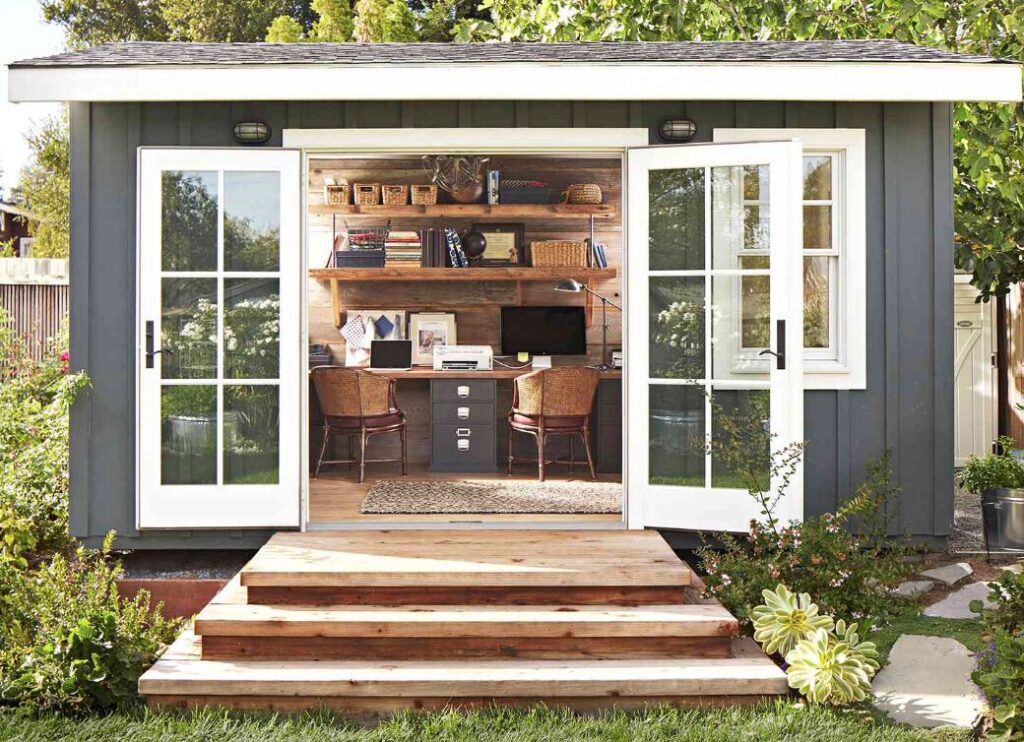Remote work has increased massively over the past four years; 16% of companies are now fully remote and, by next year, over a fifth of all American workers are projected to be working remotely. This change has had a huge impact on how and where we work. As the workforce has moved away from offices, demand for home workspaces has exploded.
Dedicated home offices soon emerged as a solution for full-time remote workers — and the absolute peak expression of the home office is the backyard office, a standalone unit that’s separate from your primary residence.
Let’s touch on some of the advantages of a fully autonomous backyard office, as well as some of the drawbacks, including a partial accounting of what it costs to build a backyard office.
Pros of Building a Backyard Office
Physical separation
Having a physical separation between your home and your workspace can give you the psychological distance you need to focus on your work. It also promotes a better work-life balance, as it makes it easier to keep your work in its designated space and time window.
Endless customization
Building your own backyard office allows you to build your ideal workspace. Whether you want a high-ceilinged atrium full of natural light, or an elegant, wood-paneled library space, you can make it happen.
Flexible use
If you eventually take an in-person job, you’ll be able to convert your backyard office into something else. It can be a weekend hobby space or workshop, a guest cottage, or a storage unit—you’re limited only by your imagination.
Increase in property value
Having a separate backyard office or accessory dwelling unit on your lot can radically increase your property value, depending on what features you’ve included in the structure. Insulated structures with plumbing and wiring that can work as independent dwellings will have the largest effect on your property value.
Cons of Building a Backyard Office
The Cost
Unless you’re renovating a garage or other existing structure, your backyard office will require building a new, freestanding structure. That can be pricey. You could also opt for a prefabricated structure, which is slightly less expensive but can still run into the low five figures.
Zoning Complications
Building a new structure in your backyard can run afoul of local regulations, especially if it’s a fully independent dwelling with a kitchen and bathroom. Some counties regulate backyard structures based on size.
In New York, for example, backyard structures only need to be permitted if they’re over 120 square feet; the national limit is generally around 200 square feet. Other counties may regulate only if they’re wired for electricity, or according to setbacks, i.e. the distance the structure will sit from neighboring properties.
Always check your local regulations before you start planning your backyard office.
Space Limitations
The size of your backyard office will be limited by the size of your backyard. If you’re working with a small yard, you may be unable to use that space for anything else once your office is built.
Maintenance
If your backyard office includes electricity, plumbing, or an HVAC system, it’ll need regular maintenance to avoid falling into disrepair. And home maintenance costs continue to climb.
Cost Breakdown
So how much will your home office cost? It’ll depend mostly on its size and what options you include.
A basic prefab model can start around $5,000 and run up to $15,000 or more.
A custom-built option can range from $15,000 to over $30,000, especially if you use high-end finishes and materials, and opt for plumbing, HVAC, and wiring.
Miscellaneous costs on top of construction can include permits, transportation and installation, specialized work (electrical, plumbing, etc.), and furnishings.
Backyard offices can be large and somewhat expensive undertakings. However, if you’re a full time, permanent work-from-home employee, they’re a flexible solution that offers a better work-life balance.
4 Tips for an Ergonomic Home Office Setup for Wellness
3 Alternatives to That Ugly Office Chair Floor Mat
8 Make-or-Break Home Office Essentials You Didn’t Know You Needed



3 Responses to “The Rise of Backyard Offices: A Practical Solution for Remote Workers”